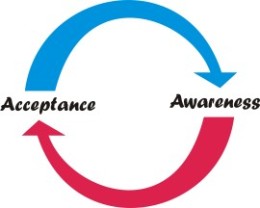Press release -
Viral load monitoring enters the mainstream
Last night I attended a dinner in Stockholm hosted by the Swedish Ministry for International Development & Cooperation. I was fortunate to have the chance to chat with Dr. Mark Dybul, Executive Director of the Global Fund. The subject of HIV viral load monitoring came up. As you might imagine, this topic has been a central theme of my dinner conversations for several years. But last night’s discussion took on a very different tone.

Viral load monitoring officially endorsed by the world’s most respected public health authority
With almost ten million people in developing nations currently receiving antiretroviral treatment (ART) for HIV, it’s fair to say that great progress has been made in addressing the HIV pandemic. However, one area has remained well behind the curve when comparing treatment standards in developed nations to those in the developing world. That deficiency is most strikingly evident in HIV viral load monitoring. ARVs can be used much more effectively when combined with viral load monitoring. Conversely, administering ARVs in the absence of viral load monitoring means replacing data with guesswork, which puts patients at risk and can waste resources. That is why every HIV patient in the developed world receives regular viral load monitoring as a central part of treatment. And, why it’s a shame that this diagnostic has not been widely regarded as a critical component of routine practice in the areas hardest hit by the HIV pandemic.
Which brings me back to my dinner with Dr. Dybul…During our discussion it suddenly occurred to me that I no longer felt like a radical evangelist advocating viral load monitoring from the sidelines of the war on HIV. It felt more like preaching to the choir. That’s because, for the first time, routine viral load monitoring has been officially endorsed by the world’s most respected public health authority. The World Health Organization (WHO) recently revised their guidelines for HIV treatment and now strongly recommends implementing routine viral load monitoring in resource-limited settings.
WHO recognized the importance of viral load monitoring as early as 2003, but fell short of including the test in its official HIV treatment guidelines for developing nations. Priorities back then were focused on getting ARVs into resource-limited countries. Now that the ARVs have arrived, viral load monitoring takes on much more significance. The revised WHO guidelines call for developing countries to roll out routine virological monitoring, with viral load tests at both six and twelve months after treatment initiation, and then at least every twelve months thereafter. In this way, treatment adherence problems are corrected more quickly and patient treatment can be adjusted immediately as indications arise.
WHO Consolidated ARV guidelines 2013
A recent report from Médecins Sans Frontières (MSF) highlighted the importance of routine viral load monitoring for a number of reasons, some of which include confirmation of treatment failure, prevention of HIV mother-to-child transmission, and improvement in HIV treatment outcomes in low-income countries. MSF currently provides treatment for 285,000 HIV patients in 21 countries. Today, most clinics in resource-limited settings try to monitor disease progression with CD4 tests alone. This research provides ten specific benefits that programs in developing nations can hope to achieve by adopting the WHO recommendation for routine viral load testing. These include:
- Support of treatment adherence
- Confirmation of treatment failure early, before CD4 decline
- Revelation of previously hidden viral loads, then help reducing them
- Enablement of program decentralization and task shifting
- Improvement of treatment efficacy
- Help meeting programwide goals
- Improvement of early infant diagnosis
- Delivery of systemic benefits, from the individual to the institution
- Cost benefits for programs by reducing:
- cost of drugs by preserving first-line therapy
- costs associated with redundant testing
- cost for viral load equipment and operations
- testing costs through the use of pooled samples
- Prolongation of treatment options for patients
Clearly, the addition of routine viral load testing offers significant gains for both programs and patients in resource-limited settings. Now that WHO has endorsed viral load monitoring, the biggest barricade to access will be ensuring that we provide viral load tests at an affordable cost. Our own viral load monitoring product, ExaVir Load, was purposely designed with that aim in mind. It is an RT-based ELISA test that measures viral load with comparable sensitivity and reliability to standard DNA-based tests. The difference is that ExaVir Load can be run in simple and/or rural laboratory environments with low initial investment. An automated version of the test is currently in development, as outlined in the recent UNITAID HIV Diagnostic Landscape report.
Viral load monitoring is no longer a fringe consideration when treating HIV in resource-limited settings. That’s great news for people with HIV in the developing world. The revised WHO guidelines have helped viral load monitoring enter the mainstream. On behalf of Cavidi, I promise to keep it there with tests that are both reliable and affordable. I am proud that Cavidi can play a central role in carrying out the WHO’s recommendation. Moreover, I’m pleased to see that leadership in organizations such as WHO and the Global Fund are all in agreement that the time for viral load monitoring is now.

John Reisky de Dubnic
CEO
CavidiTopics
- Medical research
Categories
- unitaid
- hiv viral load monitoring
- who
For over two decades Cavidi has been dedicated to increasing access to HIV viral load monitoring for all HIV-positive patients. Our ExaVir™ Load test accomplishes this by bringing national reference lab quality to the nearpatient environment. Independent studies confirm that ExaVir Load is as accurate as gold standard RNA-based tests yet is capable of running in virtually any lab. In fact, ExaVir Load is proven to perform at the District Hospital level where the need is greatest.
To date, over 350,000 ExaVir Load tests have been run backed by governments and major global NGOs in more than 25 countries. But there is still much work to be done. Cavidi is committed to continued innovation in this area in support of our conviction that the time for HIV viral load testing is now

